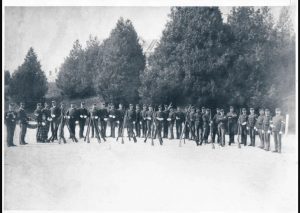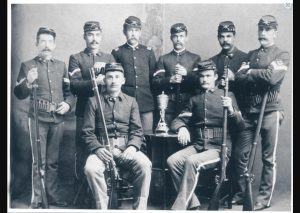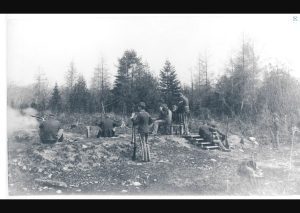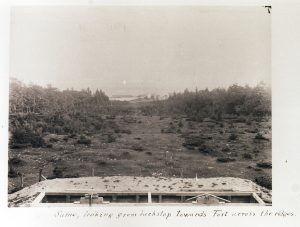American history is full of stories and legends of soldiers and civilians skillfully using their muskets and rifles in the heat of battle or some other dramatic event. Tales of David Crocket, Daniel Boone, Annie Oakley, and the Minutemen at Lexington and Concord create an image that many people living on the North American continent in the 1800s would have been skilled with firearms. As far as these stories are true, they do not accurately represent most of the people living at that time. Most people in the United States had little to no experience with any long-range rifle shooting, and even basic skills with firearms were poor. Even amongst the United States Army ranks, very few soldiers participated in any significant target practice.

This lack of target practice was not neglectful. The technology and tactics at the time didn’t require soldiers to be skilled in long-range shooting. The army supplied soldiers with a smoothbore musket, which only had an effective range of 80 to 100 yards. As a result, armies had their soldiers lined up in big columns to create mass fire groups. While an individual soldier isn’t accurate, a large group of soldiers firing as a team is a much more effective force. These tactics were common around the world. Even after rifled muskets came into existence, which are more accurate than smoothbore muskets, many armies stuck to traditional battle line tactics. Firearms with “rifling” “have grooves inside the barrel, which make the projectile spin, making it more accurate and able to shoot farther.
After the Civil War, the United States Army adopted the 1873 Springfield 45/70, often called the “trapdoor rifle.” The 45/70 was the first standard-issue breechloading rifle adopted by the army, meaning that the rifle was loaded from the rear of the rifle rather than from the muzzle. This rifle was far more accurate, allowing people to hit targets beyond 1,000 yards. Given the capabilities of this new weapon and the changing nature of warfare, the army began investigating ways to improve the marksmanship skills of their soldiers. While many officers developed different learning strategies, the army failed to provide any serious enforcement or supplies for training. Soldiers lacked ammunition for target practice, and commanding officers ultimately decided how much practice their soldiers would get. There was little pressure on commanding officers to restructure their soldiers to incorporate target practice.

The army started to improve its marksmanship efforts in 1884 by creating a new award system. Now, soldiers could earn various awards and compete against their fellow soldiers. A soldier who could hit targets 200 and 300 yards away at 80% accuracy and a 600-yard target at 70% would qualify as a marksman. Soldiers who could hit targets 200, 300, and 600 yards at 88% and targets at 800, 900, and 1000 yards at 76% earned the sharpshooter qualification. Aside from these awards, the army also created a special board to investigate ways to instruct soldiers in long-range marksmanship. Captain Stanhope E. Blunt was placed in charge of this board, and in March, Blunt’s “instruction for Rifle and Carbine Firing for the United States Army” would be officially approved and prescribed to the rest of the army.
Soldiers were now required to conduct target practice at least six months out of the year, with considerations given to climate and operational duties. Post commanders would be held responsible for their practice, and those records would be published regularly in the reports. Each garrison went on the rifle range twice weekly over a four-month practice season. Post commanders could adjust the season better to fit the climate or duties of each post. The army gave more resources and funding to post commanders to improve equipment quality and follow through on plans that needed to be addressed.

Fort Mackinac had a leg up in this new system compared to many other stations nationwide. While they initially lacked the proper ranges and suffered from the same lack of resources as many different stations, Fort Mackinac showed incredible success under the new training manual. This success is primarily attributed to the enthusiasm and skill of the officers stationed at Fort Mackinac. Both Captain George Brady and Captain Greenleaf Goodale qualified as Sharpshooters, as well as many other notable officers. A later addition to Fort Mackinac was Captain William Manning of Company E, who served as a member of the revision board for Blunt’s manual in 1885/4. In addition, Fort Mackinac quickly constructed a 1000-yard range, equipped with telegraph lines, in 1885 to accommodate the new expectations for target practice.

The 23rd Infantry stationed at Fort Mackinac boasted some of the best marksmen in the entire army. Between 1884 and 1889, sixteen soldiers from Fort Mackinac qualified as Sharpshooters. In 1885, 50 men qualified as Marksmen at Fort Mackinac. Innovations like this would help the army transform into an impressive military force. Over the next several decades, and after the many catastrophes during the Spanish-American War, the army would continue to improve and change. When the United States entered World War I, the United States had earned a reputation of being an “army of marksmen.”









